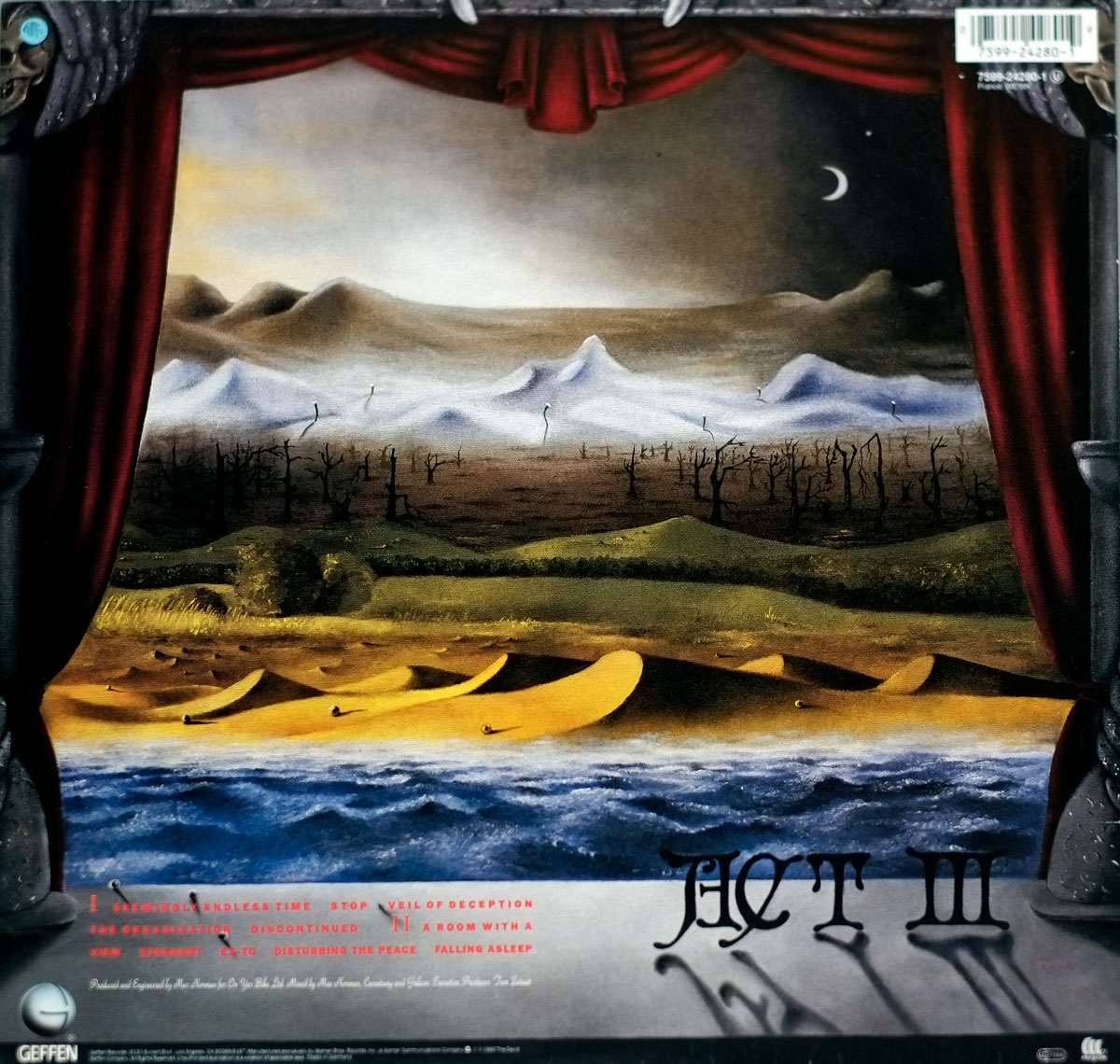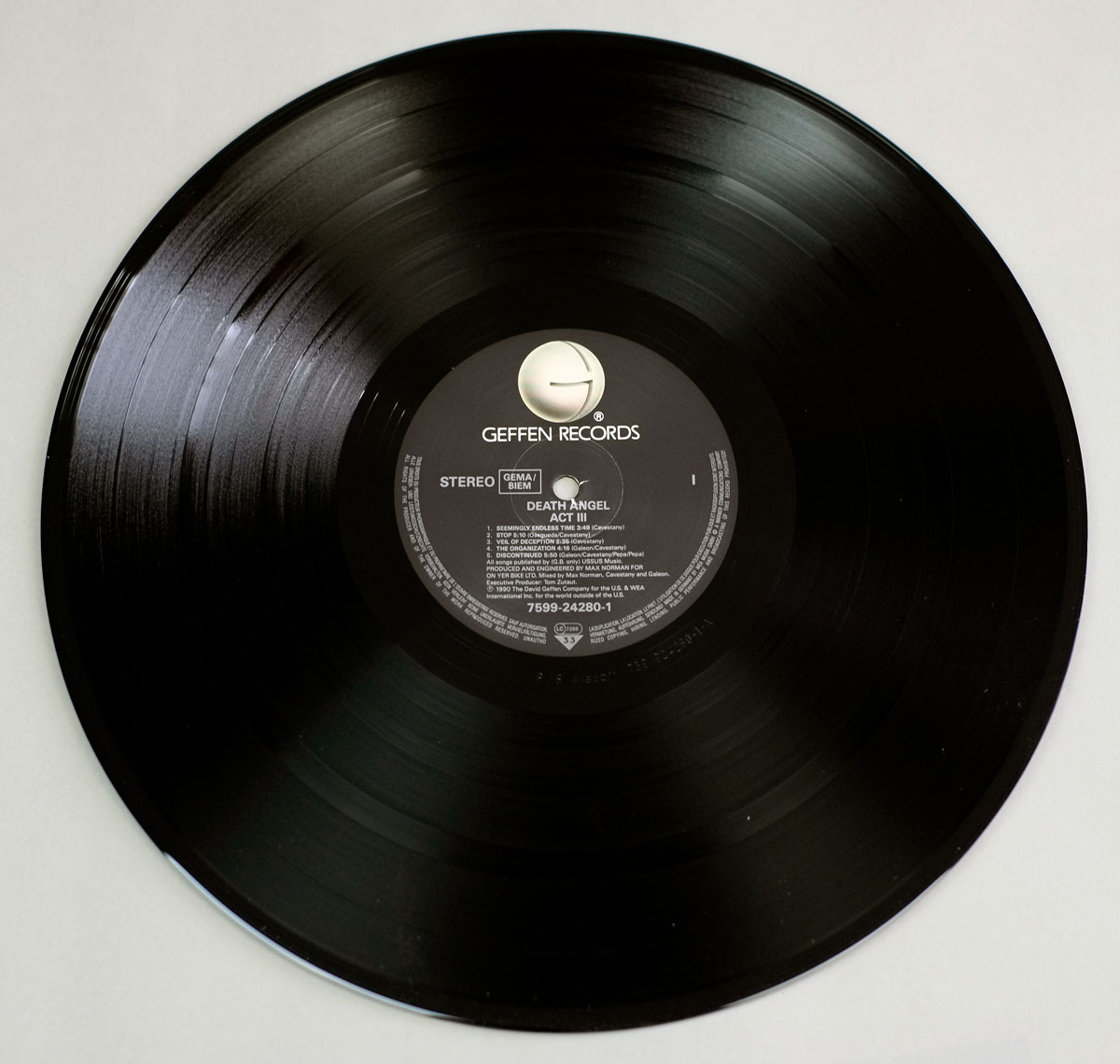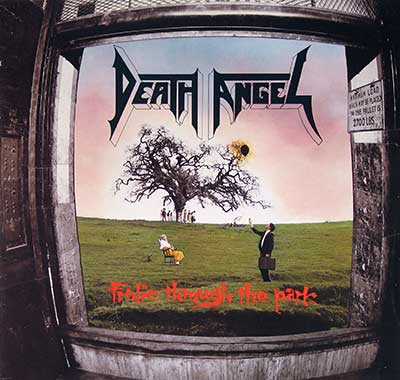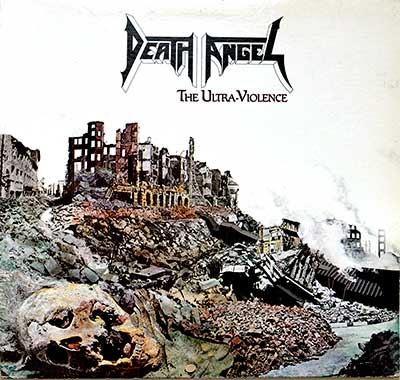Death Angel – Act III
If thrash metal in 1990 was already stumbling toward the hangover of its excesses, Act III was Death Angel throwing the glass against the wall and daring the genre to either evolve or die choking on its own spit. Here was a band barely out of their teens, already road-worn, suddenly thrust into the slick Geffen machinery with Max Norman—Ozzy’s sonic architect—twisting the knobs. And instead of falling flat under the weight of polish, they spat out a record that felt both furious and frighteningly tuneful.
The Context
By ’89 thrash had calcified into speed-for-speed’s-sake arms races, but Death Angel didn’t just double down on velocity. Coming from the Bay Area—where Exodus, Testament, and their godfathers Metallica carved the template—they had a chip on their shoulders. Act III isn’t just another blur of riffs; it’s a fight to carve melody into the din. Recorded at Dodge City Sound in California, the sessions pushed their teenage adrenaline into strangely mature territory, all without sacrificing the mosh-pit bloodlust.
The Sound
Max Norman’s production meant the guitars of Rob Cavestany and Gus Pepa punched with arena-sized clarity, while Andy Galeon’s drums snapped with a martial insistence that could drive nails through drywall. Mark Osegueda’s vocals weren’t just screamed; they were performed—snarls punctuated with hooks you could hum after the riot squad cleared out. The result: a thrash album that wasn’t afraid of being, god forbid, catchy.
The Band in Motion
This was the last time the classic five would stand together before the crash of a tour bus and the collapse of major-label patience cut them down. You can hear it in tracks like Seemingly Endless Time, where Cavestany’s riffing feels like it could dislodge tectonic plates, or the bittersweet balladry of A Room with a View, which hinted at a different future—one where thrash kids could write songs that could sit next to Alice in Chains on MTV without shame.
Standouts and Surprises
Stop rolls like a chainsaw through bureaucratic red tape, The Organization is practically a manifesto, and Discontinued proves thrash could brood without losing its teeth. Then there’s A Room with a View—a ballad!—that cracked the façade of thrash orthodoxy and landed them radio play, both blessing and curse. It showed that Death Angel weren’t content to be just another gang of riff-slingers; they wanted to rewrite the damn playbook.
Why It Matters
Act III wasn’t just another thrash record—it was a gauntlet, hurled at both the audience and the industry. Too melodic for the purists, too feral for the mainstream, it landed in the uncomfortable middle ground where the best art often lives. The irony is that this uneasy tension is exactly what made it Death Angel’s masterpiece. It was a declaration: thrash didn’t have to choose between brains and brawn, melody and mayhem. It could have both, even if the world wasn’t ready to listen.







